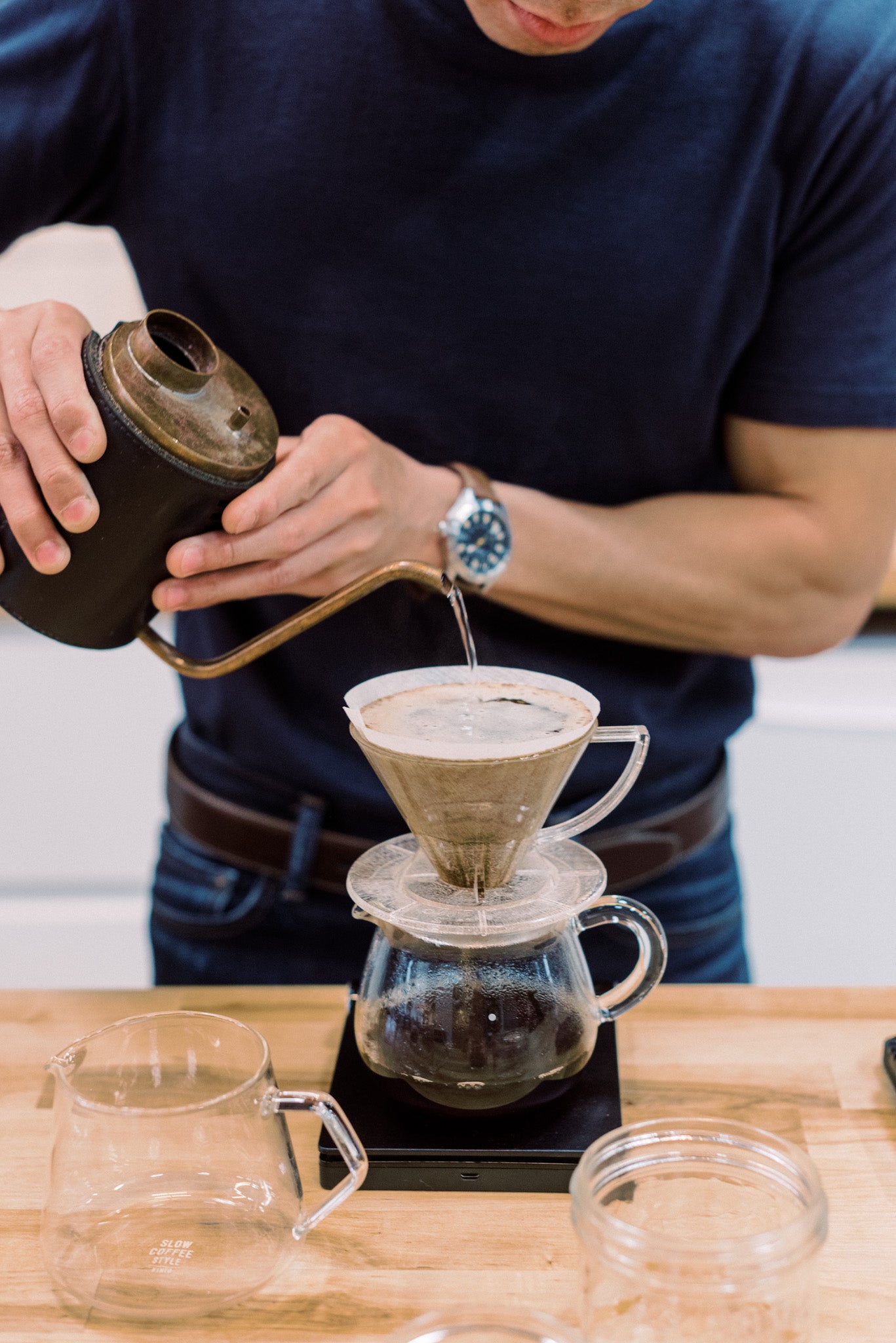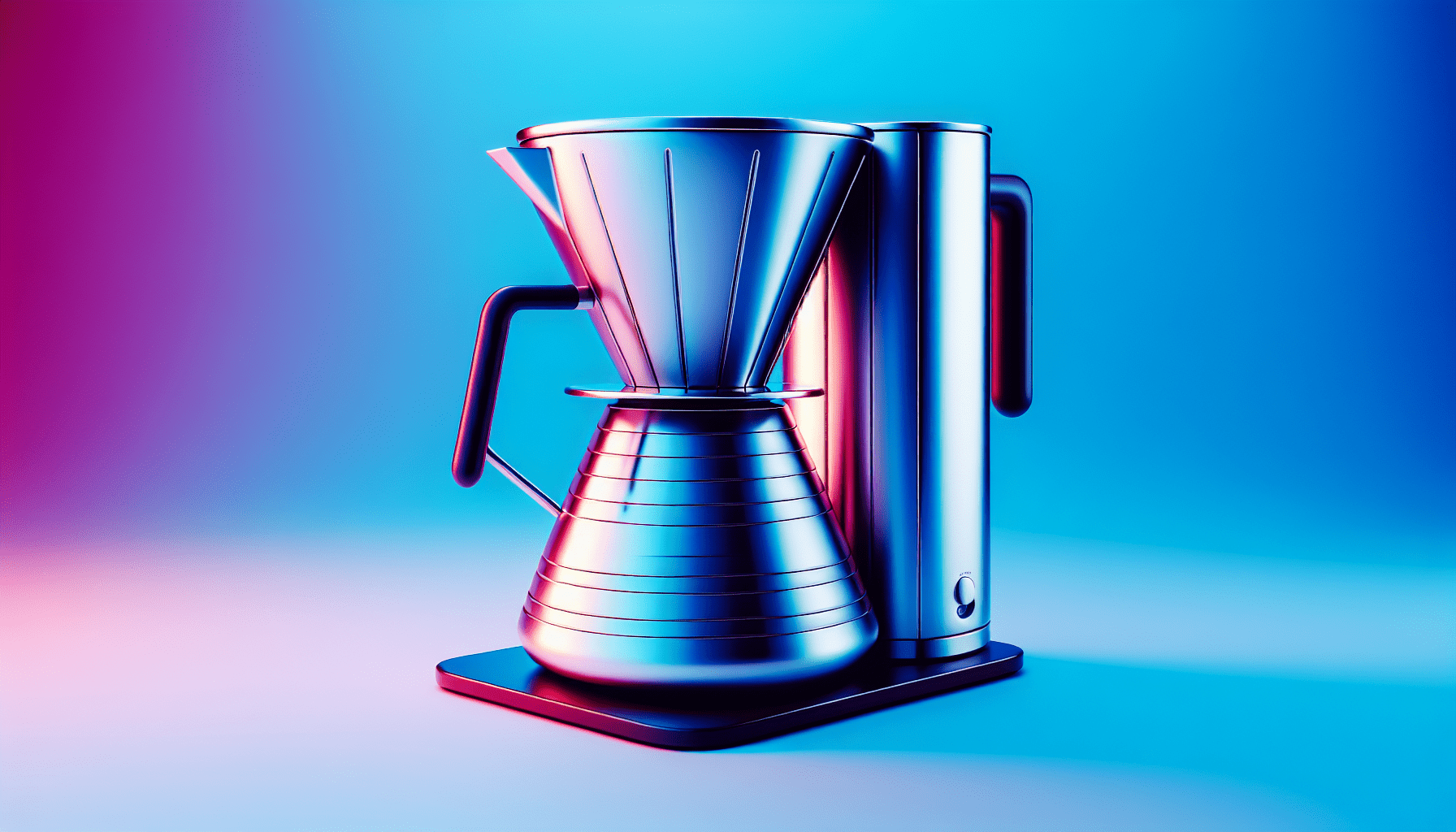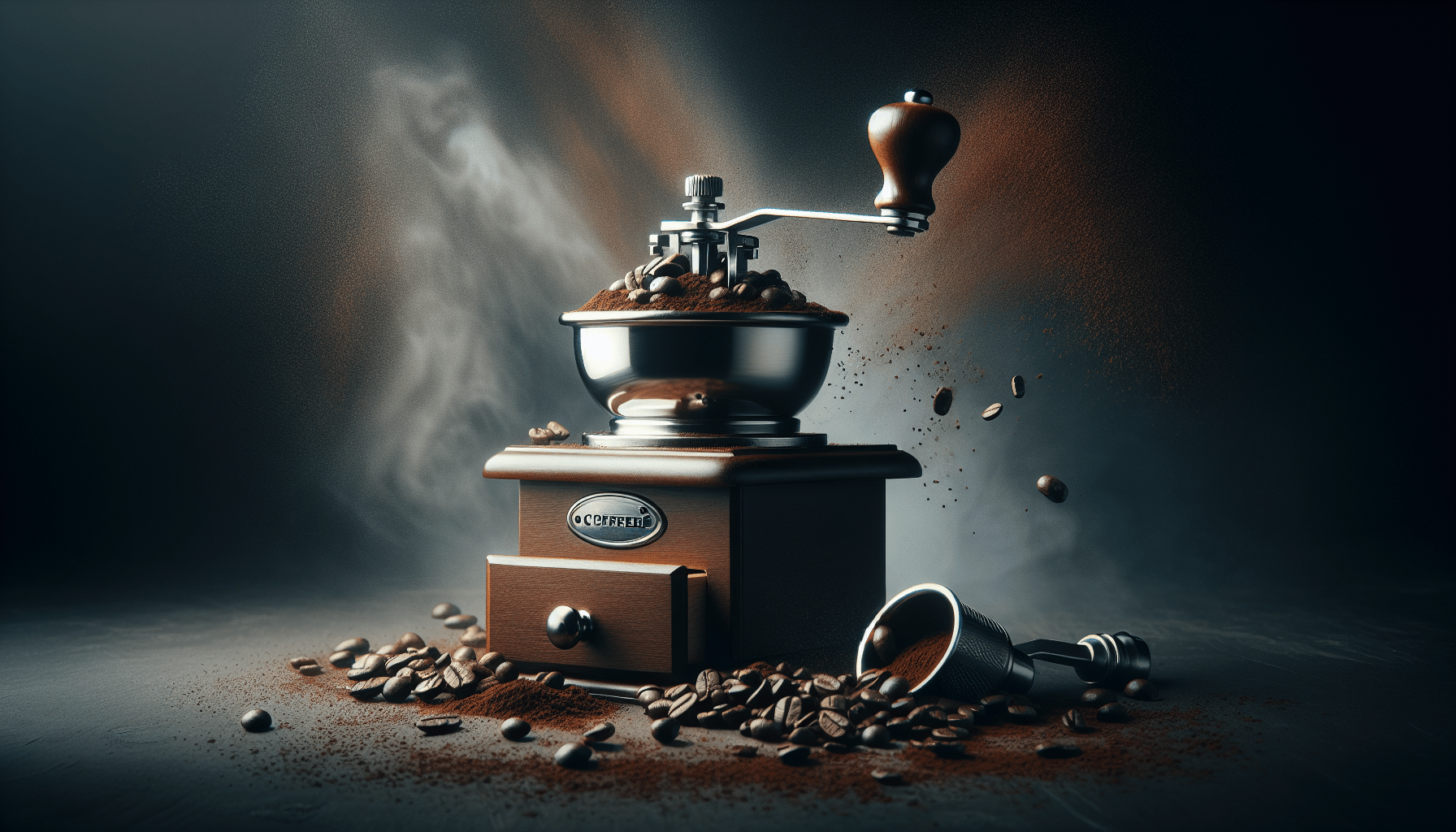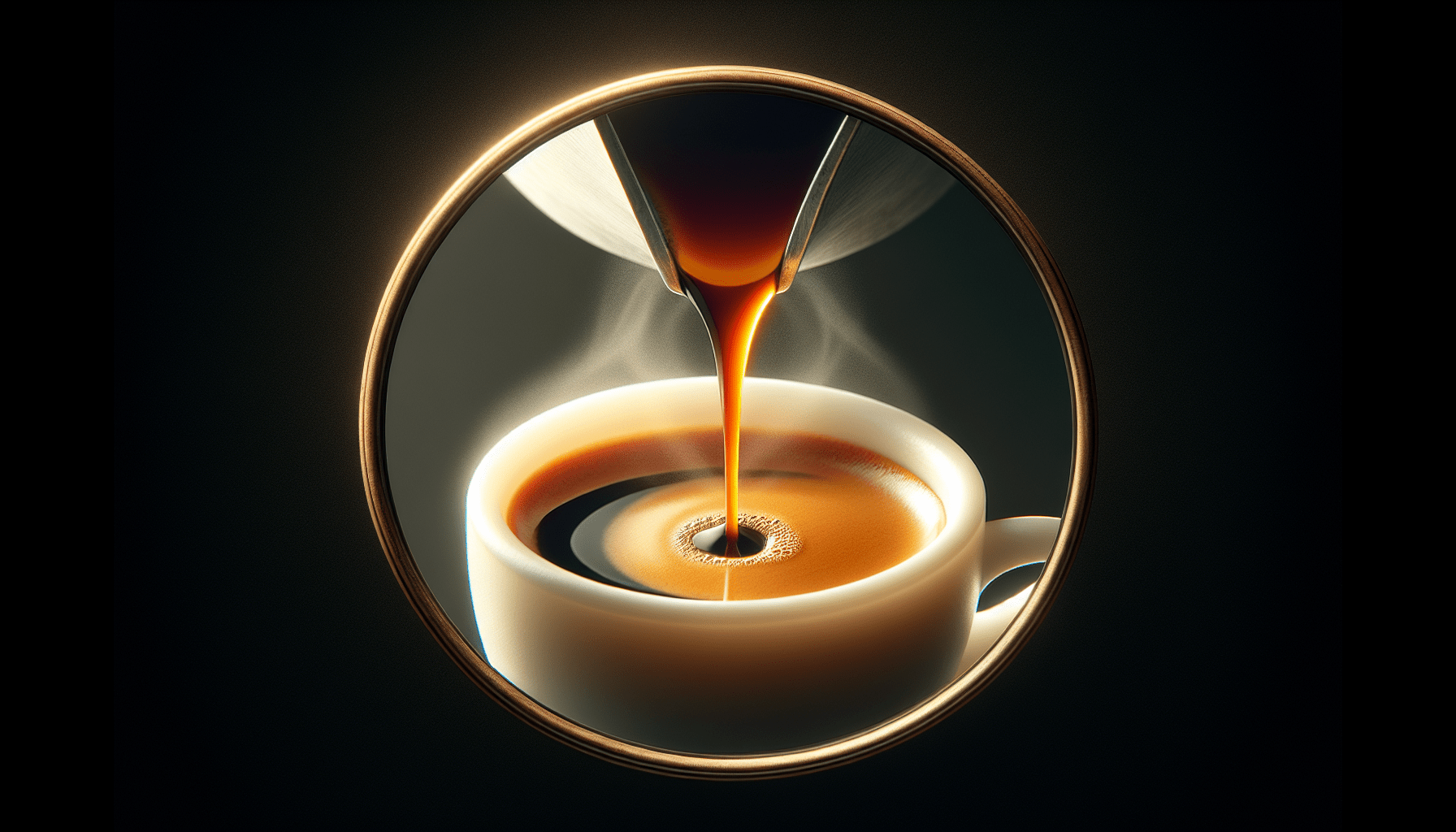Are you a coffee enthusiast looking to take your brewing skills to the next level? If so, you’ve come to the right place! In this article, we will guide you through the steps of using a pour-over coffee maker. Whether you’re a beginner or a seasoned coffee connoisseur, we’ve got you covered. Get ready to elevate your coffee game and unlock the delicious flavors that await in every cup. So grab your favorite beans, a pour-over coffee maker, and let’s dive right in!
What is a pour-over coffee maker?
A pour-over coffee maker is a simple brewing device that allows you to make a delicious cup of coffee by pouring hot water over freshly ground coffee beans. It consists of a cone-shaped brewer, a filter, and a coffee carafe or cup to catch the brewed coffee. The slow and steady process of pouring the water over the coffee grounds enhances the extraction of flavors and aromas, resulting in a flavorful and aromatic cup of coffee.
Definition and explanation
A pour-over coffee maker is designed to create a clean and well-balanced cup of coffee. Unlike automatic coffee machines, pour-over coffee makers offer more manual control over the brewing process, allowing you to precisely manage the water flow and extraction time. This level of control ensures that you can customize your coffee according to your taste preferences.
Types of pour-over coffee makers
Pour-over coffee makers come in various shapes and sizes, each offering a unique brewing experience. The most popular types include the Hario V60, Chemex, Kalita Wave, and Aeropress. While they all follow the same basic principles of pour-over brewing, they have slight differences in design, filter type, and extraction techniques. Each type has its own loyal fanbase, making it a matter of personal preference when choosing the right pour-over coffee maker for you.
Preparing the pour-over coffee maker
To ensure a successful brewing experience, it is important to properly prepare your pour-over coffee maker before starting the brewing process. Follow these steps to get your coffee maker ready:
Gather the necessary equipment
Collect all the necessary equipment, including the pour-over coffee maker, a kettle or pot for boiling water, a scale or measuring scoop, a coffee grinder, quality coffee beans, a coffee filter, and a cup or carafe to catch the brewed coffee. Having everything at hand will make the brewing process smooth and enjoyable.
Clean and rinse the coffee maker
Before using your pour-over coffee maker, it is essential to clean it thoroughly. Remove any dust or residue from the coffee maker and give it a good rinse with warm water. This ensures that the flavors of your previous brews won’t affect the taste of your current one.
Place the coffee maker on a stable surface
Find a stable and level surface to place your pour-over coffee maker on. This will prevent any accidental spills or tipping during the brewing process. A sturdy table or countertop is ideal for ensuring a stable brewing environment.
Choosing the right coffee
The key to a great cup of pour-over coffee lies in the quality of the coffee beans you choose. Here are some important factors to consider when selecting your coffee:
Selecting the coffee beans
Opt for freshly roasted coffee beans that are within two weeks of their roast date. Fresher beans tend to have more vibrant flavors and aromas. Additionally, consider the origin and roast level of the coffee. Different origins and roast levels offer unique flavor profiles, so choose the beans that align with your taste preferences.
Grinding the coffee beans
For the best results, grind your coffee beans just before brewing. This ensures maximum freshness and flavor extraction. Aim for a medium-fine grind size, resembling granulated sugar. Experiment with the grind size to find the one that delivers the desired strength and flavor in your cup of coffee.
Measuring the coffee and water
To achieve consistent and balanced brews, it’s important to measure both the coffee and water accurately.
Determining the coffee-to-water ratio
A common rule of thumb is to use a ratio of 1:15 to 1:17, meaning 1 gram of coffee for every 15 to 17 grams of water. However, you can adjust this ratio based on your personal taste preferences. If you prefer a stronger cup, increase the amount of coffee, and if you prefer a milder cup, decrease it.
Using a scale or measuring scoop
To ensure accuracy in your coffee-to-water ratio, it is recommended to use a kitchen scale. Weighing the coffee and water will provide precise measurements and consistency in your brews. If you don’t have a scale, you can use a measuring scoop to approximate the coffee amount, but keep in mind that the volume may vary depending on the grind size.
Calculating the amount of water
Based on the desired coffee-to-water ratio, calculate the amount of water needed. For example, if you are using 20 grams of coffee, you’ll need around 300-340 grams (or milliliters) of water. Adjust the amount of water according to your chosen ratio.
Boiling the water
The quality of the water and its temperature play a crucial role in the extraction process. Follow these steps to ensure you have the perfect water for your pour-over coffee:
Choosing the right temperature
Boil your water to a temperature between 195°F and 205°F (90°C to 96°C). This range ensures proper extraction and minimizes the risk of over-extraction or under-extraction. Avoid using boiling water, as it can scorch the coffee grounds and result in a bitter taste.
Heating the water
Once the water has reached the desired temperature, remove it from the heat source and let it rest for about 30 seconds. This allows the water to reach a more stable temperature, further improving the brewing process.
Pre-wetting the coffee filter
Pre-wetting the coffee filter is an important step in ensuring a clean and flavorful cup of coffee. Follow these steps to pre-wet the filter:
Placing the filter in the coffee maker
Insert the filter into the pour-over coffee maker, ensuring it fits snugly. Some filters require a pre-folded edge to maintain its shape. Make sure to follow the specific instructions for your chosen filter.
Adding hot water to pre-wet the filter
Pour hot water onto the coffee filter, starting from the center and spiraling outwards, thoroughly wetting the entire filter. This step helps remove any paper residue and preheats the equipment, ensuring a more even extraction and temperature stability.
Discarding the pre-wet water
Once the filter is pre-wet, discard the water that collected in the carafe or cup. This removes any unwanted flavors and helps maintain the integrity of your brewed coffee.
Adding the coffee grounds
With the preparatory steps complete, it’s time to add the coffee grounds to the pre-wet coffee filter:
Pouring the ground coffee into the filter
Gently pour the ground coffee into the center of the pre-wet filter. Ensure an even distribution of the coffee grounds throughout the filter for uniform extraction.
Leveling the coffee bed
After adding the coffee grounds, gently tap the side of the coffee maker to level the coffee bed. This facilitates a more even flow of water through the grounds, resulting in a consistent extraction.
Brewing the coffee
Now that everything is set up, it’s time to start the brewing process. Follow these steps to achieve a well-balanced cup of pour-over coffee:
Pouring the hot water in a circular motion
Start pouring hot water onto the coffee bed, starting from the center and spiraling outwards in a circular motion. This helps evenly saturate the coffee grounds and ensures a uniform extraction. Avoid pouring water directly onto the filter or the sides of the coffee maker.
Keeping the water level consistent
Maintain a consistent water level by pouring slowly and steadily. Avoid overfilling the coffee maker, as this can lead to an overflow or uneven extraction. Allow the coffee to flow through the filter at a controlled pace.
Allowing the coffee to bloom
As you pour the water, you’ll notice a reaction known as the “bloom.” This is when the coffee bed rises and releases carbon dioxide gas, resulting in a bubbling effect. Allow the coffee to bloom for around 30 seconds before proceeding with the remaining pour.
Managing the brew time
Controlling the duration of the brewing process is crucial in achieving the desired strength and flavor profile. Here are some tips to manage the brew time effectively:
Controlling the pour rate
Adjust the pouring rate to control the brew time. A slower pour allows for a longer contact time between water and coffee, resulting in a stronger cup. A faster pour shortens the brew time and produces a milder cup. Experiment with different pour rates to find the one that suits your taste preferences.
Monitoring the brewing time
Keep track of the total brewing time to ensure consistency in your future brews. Ideally, the brewing process should be completed within 3 to 4 minutes. If the brew time is too short and the coffee tastes weak, extend the pouring time. Conversely, if the brew time is too long and the coffee tastes bitter, shorten the pouring time.
Serving and enjoying the coffee
After the brewing process is complete, it’s time to savor the fruits of your labor. Follow these steps to serve and enjoy your pour-over coffee:
Removing the coffee maker from the cup or carafe
Carefully lift the pour-over coffee maker from the cup or carafe, taking caution not to burn yourself. Set it aside in a safe and stable place.
Pouring the brewed coffee
Slowly pour the brewed coffee from the cup or carafe into your favorite coffee mug or cup. Maintain a steady and controlled pour to avoid any spills.
Adding any desired extras
If desired, add milk, cream, sugar, or any other extras to enhance your coffee drinking experience. Experiment with different additions to find your perfect cup of pour-over coffee.
Savoring the pour-over coffee
Now that everything is prepared and you have your cup of pour-over coffee in hand, take a moment to appreciate the aromatic aromas and flavors. Sip slowly, allowing the coffee to coat your taste buds and fully indulge in the delightful experience of pour-over brewing.
Using a pour-over coffee maker may seem intimidating at first, but with practice and experimentation, you’ll soon become a skilled brewer, able to create your perfect cup of coffee. Enjoy the process of brewing with a pour-over coffee maker and savor the complex flavors and aromas that it can extract from your favorite coffee beans. Happy brewing!




